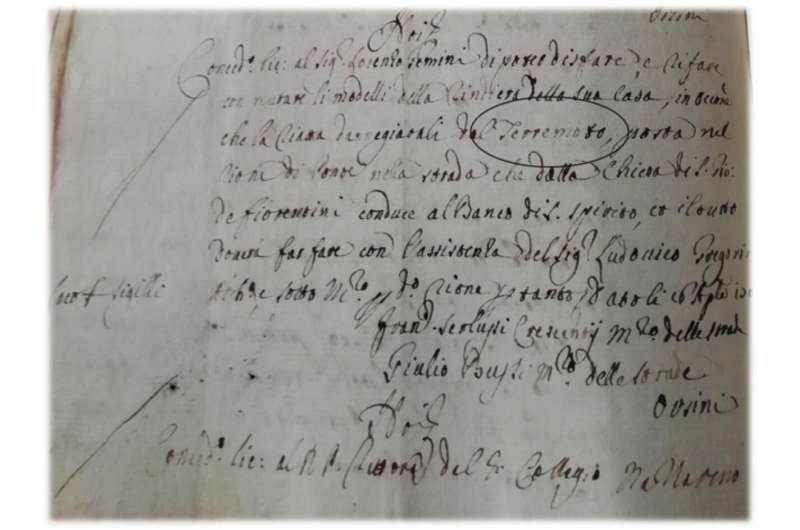'Lettere patenti' help assess intensity of historic central Italian earthquakes

Three hundred-year-old administrative documents from the Roman government, granting residents permission to repair damage to their buildings, can help modern-day seismologists calculate intensities for a notable sequence of earthquakes that struck central Italy in 1703.
Details gleaned from these "Lettere Patenti" offer a unique glimpse at the geographical spread and types of building damage caused by the 1703 earthquakes, according to the report in Seismological Research Letters by Andrea Tertulliani of the Istituto Nazionale di Geofisica e Vulcanologia and colleagues.
Seismic intensity—a way to describe an earthquake's severity through its effects on humans and structures—is assessed with reference to statistically representative buildings. Using information from the historical documents, the three main earthquakes in the 1703 sequence were likely between intensity V and VI, as measured by the European Macroseismic Scale-98.
Intensity V or "strong" means that the earthquake was felt indoors by most people, trembling buildings and tipping over top-heavy objects. Intensity VI or "slightly damaging" earthquakes can cause minor to moderate damage to buildings, like cracking and falling pieces of plaster.
The administrative documents provide a more realistic view into the earthquakes' impact than historical reports of damage to monumental buildings such as churches and Rome's Colosseum, the researchers conclude.
The new study's "fundamental contribution— information about residential housing— is crucial for assessing intensity, especially when using the EMS-98," said Tertulliani. "This macroseismic scale suggests, if possible, to not consider monumental buildings in the intensity evaluation because they are not statistically significant. The Lettere Patenti are a source of information on the residential building stock of Rome."
The 1703 sequence, including earthquakes on 14 January, 16 January and 2 February, were widely felt and feared by people in central Italy. The January earthquakes were located in the Umbria region, which at the time was part of the Papal State, and the February earthquake struck the Abrutium region in the Kingdom of Naples.
They are among the few earthquakes to have produced significant damage to monumental structures in the city of Rome, Tertulliani and colleagues noted. The damage included toppled chimneys, falling rubble and cracks in the domes and vaults of several churches, including St. Peter's and St. Paul's Basilicas, and the church of St. Andrea della Valle. Two or three arches at The Colosseum collapsed, and parts of the Aurelian Walls were damaged.
The researchers point out, however, that churches and towers are often the structures that are damaged the most during earthquakes, due to their structural complexity. To expand their view of the earthquakes' impact, Tertulliani and colleagues built on a previous study looking at administrative documents from the time period, called Lettere Patenti or literally, "letter of permission or license." The documents issued by the Roman government authorize individuals to complete maintenance on the external parts of their buildings.
"The work of the historical seismologist has something of both the archaeologist and the detective, so it is necessary to look for a wide typology of documents," Tertulliani explained. "Before the end of 18th century, most of the reports or chronicles that were written after a natural phenomenon were not conceived with the primary aim of describing its effects, so the seismologist has to search for administrative documents."
With the help of the Lettere Patenti and a 1748 property map, the researchers were able to pinpoint 93 new damage points on civil buildings spread throughout the historic center of Rome. Most of the repairs authorized by the documents involved demolition and reconstructions of walls or parts of buildings after moderate structure damage.Tertulliani hopes to study other historical Italian earthquakes using these document-based methods, especially as new archival material becomes available. But he cautioned that "this kind of research is extremely time-consuming, and it does not always lead to appreciable results."
More information: Andrea Tertulliani et al, How Historical Seismology Can Benefit from Bureaucracy: The Case of the "Lettere Patenti" in the City of Rome in 1703, Seismological Research Letters (2020). DOI: 10.1785/0220200046
Journal information: Seismological Research Letters
Provided by Seismological Society of America
















